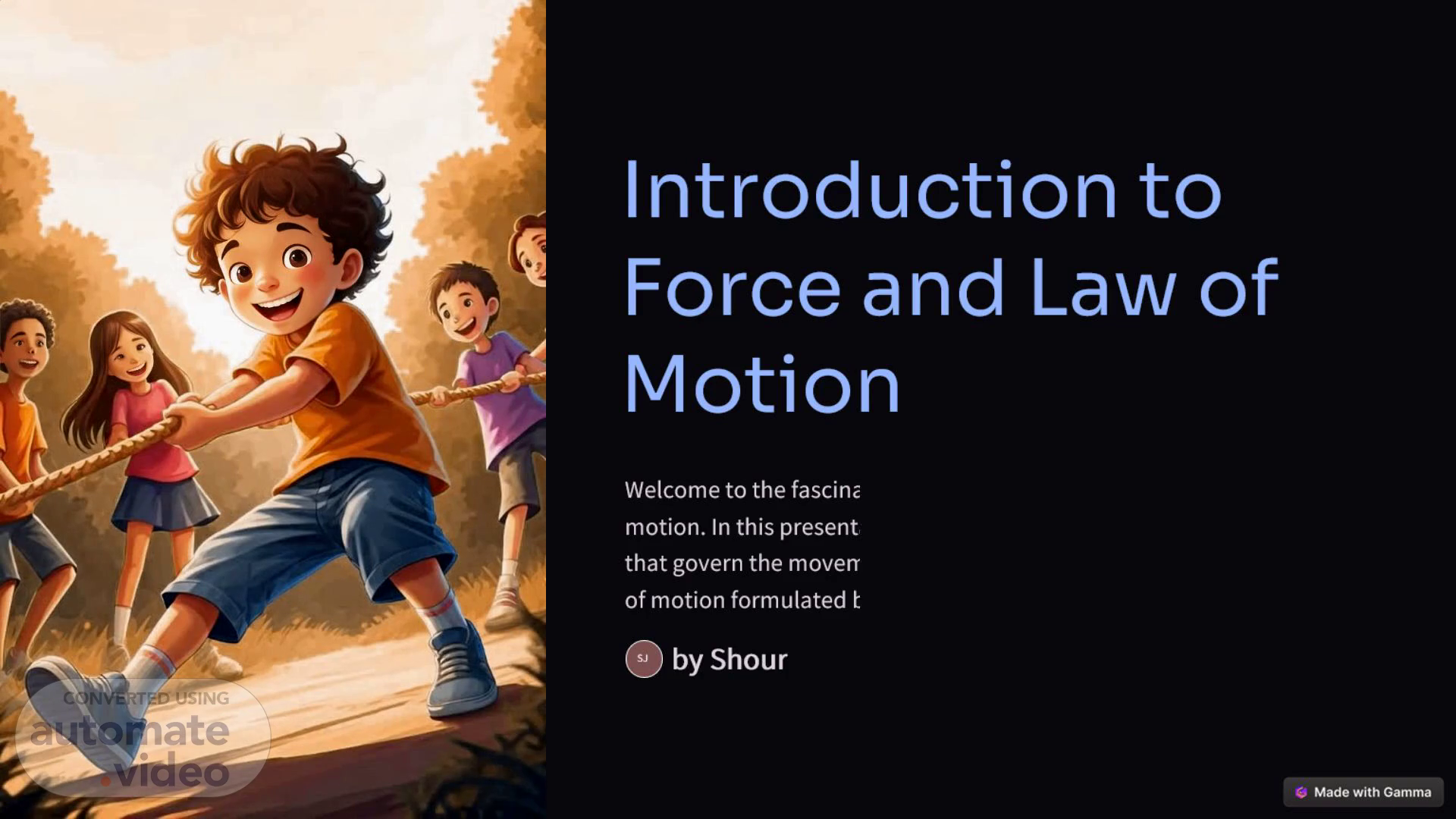Scene 1 (0s)
Introduction to Force and Law of Motion. Welcome to the fascinating world of forces and their influence on motion. In this presentation, we'll explore the fundamental concepts that govern the movement of objects, delving into the foundational laws of motion formulated by Sir Isaac Newton..
Scene 2 (10s)
[Audio] We will discuss the concepts of force and motion, and the laws that govern them. Force is a push or pull that can cause an object to start, stop, or change its direction or speed. Every object is subject to various forces. We will explore the different types of forces, including contact and non-contact forces. Contact forces occur when objects directly touch each other, while non-contact forces act on objects even when they are not in direct contact. We will also examine the laws of motion, and how they affect the behavior of objects in motion..
Scene 3 (15s)
[Audio] We will examine the laws of motion and the types of forces that affect objects. Each force has unique properties and effects on objects..
Scene 4 (19s)
[Audio] Exploring The Laws Of Motion Newton's First Law of Motion states that an object at rest will remain at rest, and an object in motion will continue in motion with the same speed and direction unless acted upon by an unbalanced force. This concept is often referred to as the law of inertia. Types of Motion Rest refers to an object that is not moving. Motion refers to the movement of an object. Unbalanced force is the force that causes an object to change its motion. Let's examine these concepts further and see how they apply in different scenarios..
Scene 5 (24s)
[Audio] This slide presents the relationship between force, mass, and acceleration. The acceleration of an object increases when a force is applied to it. On the other hand, when the force is decreased, the acceleration decreases. The formula F = ma, which represents this relationship, is a fundamental concept in physics. It is used to explain the motion of objects in various fields..
Scene 6 (28s)
[Audio] We will present the concepts of force and motion and the laws that govern these phenomena. Our focus will be on the principle of action and reaction. When one object exerts a force on another, the second object exerts an equal and opposite force on the first. For example, a rocket engine burns fuel and expels hot gases, pushing back on the rocket and propelling it upwards..
Scene 7 (33s)
[Audio] Friction is a force that opposes the motion of an object when it is in contact with a surface. This force is caused by the microscopic irregularities between the surfaces in contact, which create resistance to movement. Weight is another important factor that affects the amount of friction between surfaces..
Scene 8 (37s)
[Audio] The laws of motion are critical for comprehending the behavior of objects in motion and for designing and developing technologies that depend on motion. In our daily lives, the laws of motion are utilized in transportation, sports, and machines that operate on the basis of motion..
Scene 9 (42s)
[Audio] Momentum is a measure of an object's mass in motion and is calculated as the product of an object's mass and velocity. The law of conservation of momentum states that the total momentum of a closed system remains constant..
Scene 10 (46s)
[Audio] We hope that you found this presentation informative and useful..
